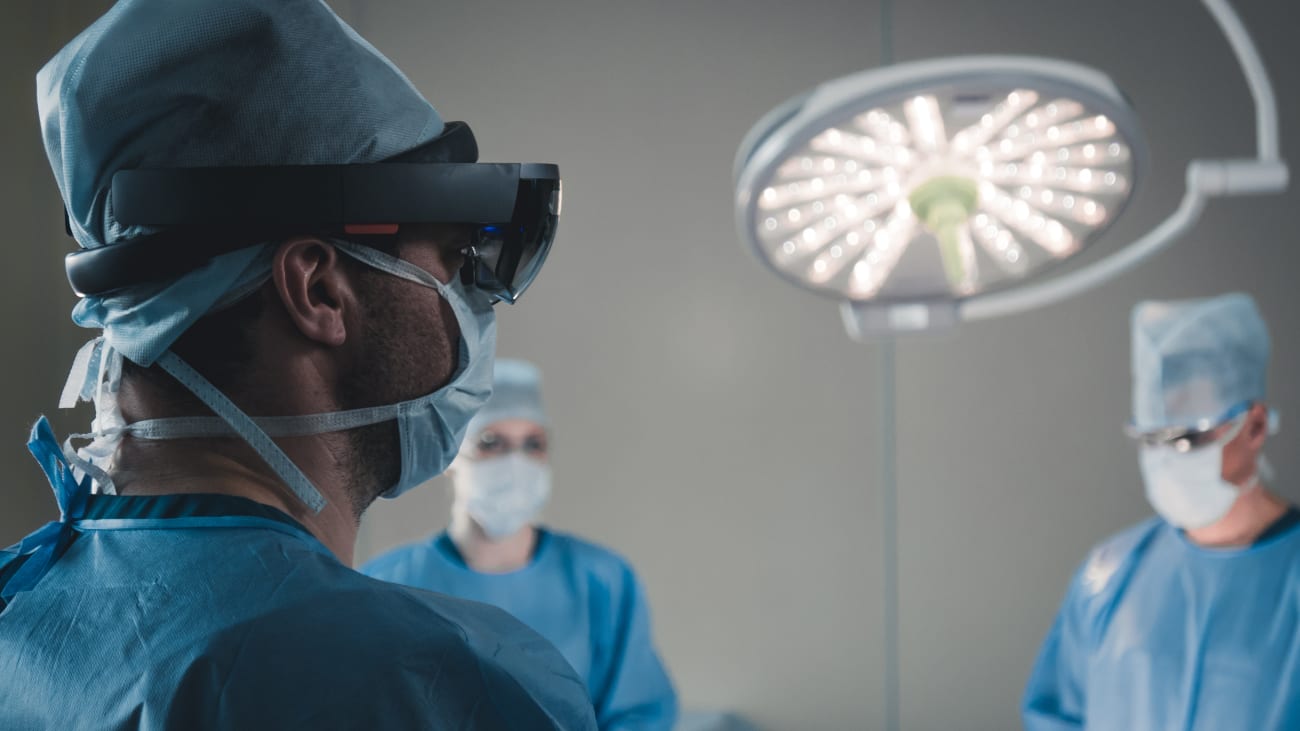

Long gone are the days when neurosurgeons opened large drapes and positioned mirrors to reflect light onto the surgical field. Today’s practitioners can virtually “fly” through the brain using augmented reality. They command robotic instruments with 360-degree articulation, navigating tiny spaces in the brain and spine. And they use artificial intelligence to help map out surgical approaches.

Warren Selman, M.D.
This new era — and its ability to reshape how physicians diagnose, treat and manage complex neurological conditions — was the subject of several presentations recently by Warren Selman, M.D., and Timothy O’Connor, M.D., at the Marcus Neuroscience Institute Brain & Spine Symposium, an educational meeting to bring the latest advances to physicians and other healthcare providers.
“Neurosurgery stands among the world’s oldest known medical specialties,” said Dr. Selman, director and chief medical officer of the Institute, located at Boca Raton Regional Hospital, part of Baptist Health. “Studies have shown that by the 1400s, the Incas proved to be skilled surgeons with survival rates between 80 and 90 percent. However, the technological advances of the last century, from illumination and magnification with microscopes to today’s navigation and virtual reality systems, have fundamentally redefined our capabilities.”
For providers who care for patients with neurological problems, these innovations deliver enhanced precision while minimizing invasiveness and optimizing patient outcomes. “The spine is a very elegant structure surrounded by nerves,” said Dr. O’Connor, director of minimally invasive and robotic surgery at the Institute. “Advances in accuracy and precision provide vital clinical advantages.”
Advanced Visualization: Beyond Traditional Boundaries
Contemporary imaging has evolved far beyond conventional MRI and CT scans. “Effective surgical intervention depends on visualization,” Dr. Selman explained. “But it isn’t just seeing what’s in front of us. A good surgeon needs to see what lies beneath and beyond the visual field.”
While neurosurgeons are typically skilled at visualizing 3D anatomy in their mind’s eye, virtual and augmented reality, he added, provide a much more comprehensive view. “Virtual and augmented reality allows us to see the surgical corridor in a different way.”
At Baptist Health, Dr. O’Connor was the first neurosurgeon to perform next-generation augmented reality spinal surgery using the latest version of a novel, advanced high-resolution technology. The Institute also recently launched yet another new virtual and augmented reality platform for neurosurgery. Beyond surgical planning and visualization enhancement, this technology enables patient education, allowing patients to don a 3D headset and “see” into their own brain, gaining a better understanding of their condition.
“Patients want to be active participants in their care,” Dr. Selman said. “Given that over 65 percent of patients are primarily visual learners, it only makes sense that we give them informed consent through what they can see and understand.”
Robotic Precision Enters the Playing Field
Robotic assistance has matured from experimental technology to an essential surgical tool. With sub-millimeter precision, the ability to access previously unreachable anatomical locations through minimally invasive approaches, and 360-degree articulation that surpass human dexterity limitations, the latest generation of surgical robots has brought unprecedented accuracy.
The doctors agree that the most exciting developments in the field have occurred with the intersection of technologies. Real-time imaging, robotic assistance and AI systems now function as integrated platforms.
“Merging computer navigation with robotics has improved surgical planning, offering superior visualization and guidance trajectory, helping us perform surgeries in a safer and more accurate environment,” Dr. O’Connor said. “When we input all of the information into an AI ecosystem, we can look at how changing one variable changes the others. I’m very excited for what the future holds.”
For practitioners, staying current with technological advances isn’t optional, it’s essential. The rapid pace of innovation demands continuous learning and adaptation to maintain and improve patient care.
“It’s important that we embrace all of the technology. As the process evolves and technologies advance, we will continue to make neurosurgery safer,” Dr. Selman said.

